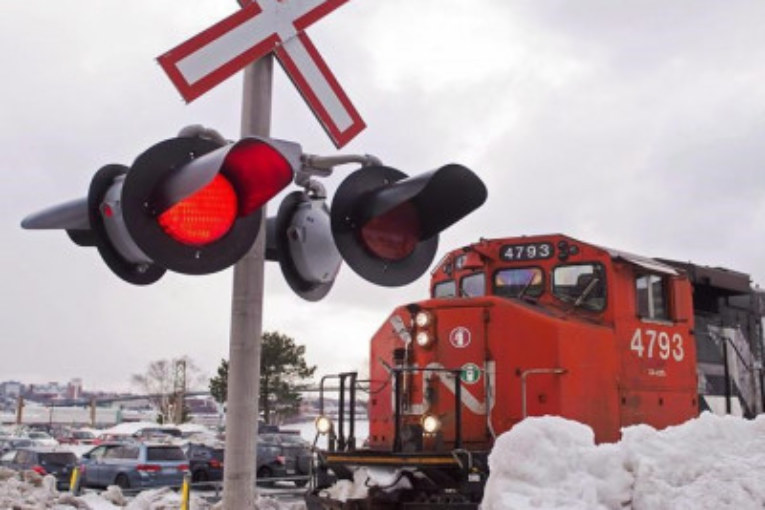
MONTREAL — The potential dismantling of the North American Free Trade Agreement poses the biggest risk to Canada’s railways not benefiting this year from healthy economies and higher demand to move crude oil, say industry observers.
“What keeps us up at night?” said analyst Kevin Chiang of CIBC World Markets. “NAFTA renegotiations.”
Chiang said the earnings implications of the U.S. government’s move to disband the continental free trade agreement are unknown, but an almost immediate 10 per cent drop in values in the aftermath of the Brexit vote in the United Kingdom could be a guide post for Canada’s industrial and transportation sectors.
“We would not be surprised to see a similar immediate reaction in the Canadian industrial/transportation complex, especially for those companies tied to North American trade,” he wrote in a report this week.
Fadi Chamoun of BMO Capital Markets says a repeal of the 24-year-old NAFTA could create significant uncertainty and potentially weigh on the valuations of Canadian National Railway and Canadian Pacific Railway.
About 30 per cent of the railways’ revenues are derived from cross-border trade, with 60 to 70 per cent of that being Canadian exports to the U.S., he wrote in a report.
The overall impact to the Canadian economy would be almost a one percentage point decrease in gross domestic product and a likely five per cent depreciation in the value of the Canadian dollar, said a Bank of Montreal study released in November.
The depreciation of the loonie would bolster Canadian export competitiveness and over time offset half the decline in GDP resulting from about a 1.7 per cent increase in tariffs.
BMO Chief Economist Douglas Porter has described the impact as a serious but manageable risk.
U.S. tax reforms are expected to boost earnings for companies with large operations south of the border. Chiang estimates the decrease in the tax rate from 35 to 21 per cent will shave about two points off the effective tax rates of CN Rail and CP Rail, helping to raise earnings per share.
Even before these changes, analysts anticipate that healthy forecasted economic growth in North America should help railways.
They said the outlook for rail volumes has improved over the last six months as the North American grain harvest and automotive trends were not as weak as anticipated. They also expect crude-by-rail should provide a boost.
Chamoun anticipates overall carloads will grow about two per cent this year after increasing about 4.5 per cent in 2017. That should translate into double-digit earnings growth for the full year.
Increased oil sands production over the next two years should drive a resurgence of crude-by-rail until new pipeline capacity comes on stream, said Walter Spracklin of RBC Capital Markets.
Royal Bank is forecasting production increases of 315,000 barrels per day in 2018 and 180,000 in 2019.
Spracklin estimates that the two railways only handled 38 per cent of peak capacity last year transporting 35,000 to 40,000 carloads, compared to 110,000 carloads during the peak in 2014.
While CN Rail has a network advantage with its line running deeper into the oil sands, he said the Montreal-based railways has limited capacity for crude, giving CP Rail an opportunity to gain a larger share of the business.
The two railways report their 2017 results later this month.
CN Rail (TSX:CNR) is expected to earn $3.83 billion or $5.05 per share in adjusted profits for the full year, according to analysts polled by Thomson Reuters. That compared to $3.58 billion or $4.59 per share in fiscal 2016.
That is expected to increase to $4.06 billion or $5.52 per share in fiscal 2018.
Analysts forecast that CP Rail (TSX:CP) will earn $1.7 billion or $11.45 per share in adjusted earnings, compared to $1.55 billion or $10.29 per share in 2016. For 2018, they forecast $1.84 billion or $13 per share.
Share This:
You can read more of the news on source



